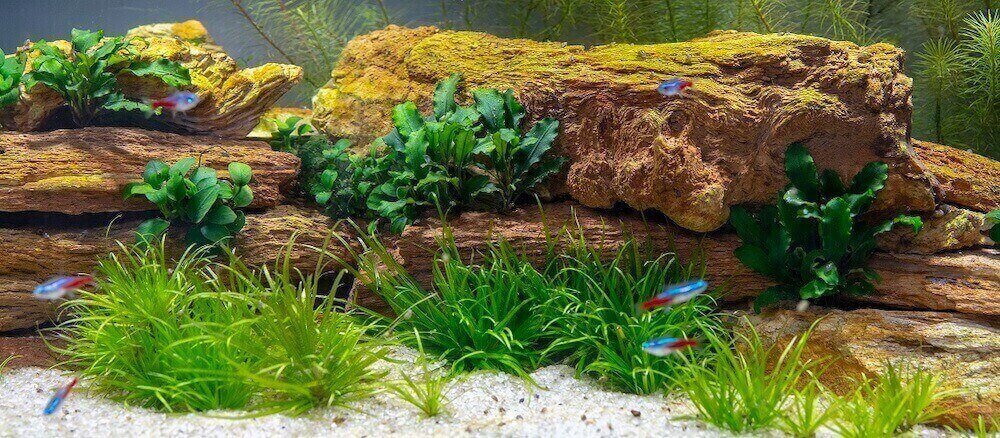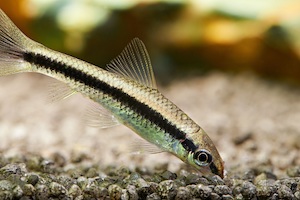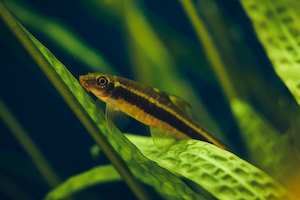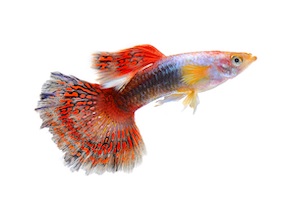
Algae have a category of its own under flora. Anything that not classified as moss or any other higher plant type is considered algae. It can range from unicellular organisms with a threadlike form that can only see under the microscope to the macroscopic seaweeds.
Although plants classified as algae, it does not indicate the size since some types can even grow up to 60 feet.
Algae growth is also one of the major concerns of many aquarists and fish keepers, and they treat it like a pest problem in terms of the frequency in keeping their tanks clean. Of course, some algae are beneficial to nature and humans. Getting rid of algae completely in your tank or pond may be detrimental to the overall health of the organisms living in it and maintaining its environment.
Importance of Algae
Algae, partnered with microorganisms present in your tank or pond-like bacteria, is considered very important in the habitat since they help lower down the nitrogen rate, which can be toxic towards your fish. The difference that lies between bacteria and algae is that bacteria convert nitrogen to another type of gas that expelled out of the system. On the other hand, Algae, once it dies, rereleases the nitrogen into the water and restarts the nitrogen cycle. This process can often unbalance due to the overpopulation of algae than bacteria.
In purpose to support bacteria’s action in expelling nitrogen and excess organic matter, biofilter is often used by fishkeepers to keep algae in check by altering the water conditions achieving the ecological balance that will help fish thrive even in captivity.
Fish keepers are especially wary towards algae since, at a controlled number, they are beneficial. But if its population increases, a problem would arise, and its effects will be scathing. Getting rid of algae ultimately is impossible, so managing the population is the best option for keeping the tank healthy and maintaining the ecological balance of the habitat. The good thing is that a lot of fish are bottom feeders who love to eat algae, which will surely keep your tank’s algae in check for you, and at the same time, you’ll surely enjoy the self-sufficient activity of your fish as they go around your tank for algae.
Algae Eaters
These are deemed as the clean-up crew of tanks and ponds since this type of fish has a diet mainly or partly consisted of algae. These can be a variety of underwater creatures–from snails, shrimp to fish.
They are a huge help since they can maintain the level of nitrogen production inside the tank by eating the excess algae that will naturally balance out your ecosystem without using a biofilter. Having algae eaters as pets is safe and effective–a surefire way for your algae problem. Not only that, but they add to the diversity in your tank without harming or bothering other fish.
Choosing the Best Algae Eater
One of the concerns in choosing your algae eater is the probability of having its temperament clash with certain fishes, especially the territorial ones. And these algae eaters have peaceful and docile temperament than most of your attractive fishes.
When their job helps you clean and maintain the tank, you need to choose a specific type that will not be easily preyed upon or bullied by others. It is always wise to do some research for your probable options for algae eaters in your tank. It will make introduction much more accessible to other fishes, building rapport with other fishes (so they can leave your algae eater alone), and if they can tolerate the new guy without stressing each other out. Researching will also give you relevant information as to their personalities and breeding requirements.
There are fish, snails, and shrimp algae eaters, and each type of species has a specific preference for it to survive and live comfortably in the tank. You’re the one who will have to adjust the water conditions or other designs, or simply choose an algae eater right for yours. Also, knowing the specific algae eater you want will give you what kind of algae it consumes. Some openly graze in pretty much any algae while some dine on particular types only.
When a particular type of algae is growing in your tank or pond, you’ll need to find the algae eater specializing in eating that type of algae.
Depending on the tank’s size, some fishkeepers add only one algae eater, and if it is of a considerable size, buying at least two or three will suffice. Another note on this is that you’ll also have to know if they can live.
Best Algae-Eating Fish
1) Siamese Algae Eater

The Siamese Algae Eater comes from the family of freshwater carps, which is quite famous for consuming algae.
These are considered top brass in algae-eating and very popular among fish keepers as a powerhouse for eating the algae out of your tank.
Siamese algae eaters can grow up to six inches and are versatile for maintaining algae from new tanks to big tanks and ponds. They have a peaceful nature and are relatively easy to take care of, which is an excellent recommendation for beginner hobbyists and fish keepers all around. They are also quite friendly and generally get along with most fish species.
They are suited for clearing algae out of bigger tanks or ponds. They are specially held in high regard since they are rare algae eaters who can eat the dreadful black beard algae, which most avoid. Along with their reputation, they have a large appetite.
Alongside their incomparable help in maintaining the algae population, they also help in lowering or getting rid of flatworms and eating leftovers and waste in the tank. They are especially careful creatures and quite helpful even in aquariums with many plants and designs.
Although a word of caution, since Siamese algae eaters are very territorial, especially around their kind. A rule of thumb in keeping them at peace is to put in no more than 5 for every 100 liters of water or swimming space. They also require a lot of oxygen and thrive in temperatures around 25 degrees Celsius.
2) Twig Catfish
Twig catfish are more of green algae experts and are slowly becoming more available in stores for fish keepers and ranked second-best on algae eating. They are voracious eaters and eat almost any kind of food. They can clear out algae in no time, which is comparable to the rate of plecos.
Though, they have more specialized instructions in taking care of them. For one, along with a steady diet of fish food, they can consume all kinds of algae. Also, they are shy by nature and need many hiding spaces, whether it be among planks, makeshift caves, tubes, and in the wild, they can often found stuck on driftwood branches.
It is also famously known as a stick catfish. This catfish looks just like a twig or a stick from its namesake and can camouflage as one with their thin and brown colored bodies. In large aquariums and ponds, they are hard to spot because of this. They require more tank space than most since it can grow up to 7 inches long.
They also require an aquarium with a high oxygen level with a pH ranging from 6.0 to 8.0. They are especially sensitive to even a slight change in the water conditions and chemistry.
It is recommended they come in pairs; in a 12-gallon tank (minimum). Perfect tankmates for this are fishes that are also docile by nature, such as pencil fish, rasboras, hatchets, and tetras. Be sure to avoid bards and cichlids since twig catfish are vulnerable against their attacks.
3) Bristlenose Plecostomus
Coming down to the fourth in this list is the bristlenose plecostomus, or for short, bristlenose plecos. Aside from being great algae eaters, they considered attractive additions to many aquariums, making them a good deal pricier and more valuable than the common Suckerfish (Hypostomus Plecostomus). The go-to algae eater for most tanks can grow up to two feet long, adding a slight dilemma in terms of maintenance, especially for newbie fish keepers.
Bristlenose plecos can grow up to 4 inches long and are comfortable in medium to large-sized tanks. This type of pleco has a peaceful and friendly temperament and can get along with the larger and more aggressive fish species. One of the best benefits of having this fish is eating green spot algae, which most algae eaters avoid.
In terms of physical characteristics, bristlenose plecos come in gold and albino colors, which is sought after by many aquarists since their color pops out. They exhibit whiskers like catfishes for males, which is uncannily descriptive of a fish doing janitorial duties.
In the tank, you’ll need to have many hiding places provided for this fish, especially driftwood. Make sure to condition your water to a slightly hard to slightly soft with a pH level between 6.5-7.5. If you’re in a wintry country, better keep your tank inside, careful not to let the temperature drop below 50 degrees Fahrenheit.
They get along with most fish, even the most difficult ones, and they become more sociable when paired with another of its type.
4) Siamese Flying Fox

Often mistaken with the siamese algae eater, but they do share the same territorial temperament. Siamese flying foxes belong to the Cyprinidae family, which thrives in the Southeast Asian freshwaters. They are a popular option among the aquarium trade.
They can grow up to 6 inches and thrive in tanks holding 20 gallons of water at the minimum.
They are as careful as the siamese algae eaters cleaning up the tank, not disturbing plants and designs. They eat a variety of food from leftover flakes, pellets to vegetables, and even live feed.
It is highly advised for fish keepers to keep only an individual Siamese Flying Fox because of its territorial tendencies. However, some aquarists like to keep schools of this fish.
They are compatible with eartheaters, knife fish, gouramis, tetras, rasboras, acaras, barbs, angelfish, and loaches.
Its maintenance includes the water conditioning from soft to the slightly hard water with a pH level of 5.5 to 7.5. With proper care, these can live for up to 8 to 10 years in captivity.
5) Livebearers

These are various fish such as guppies, platies, and mollies and are readily available on the market for fish keepers and hobbyists.
Alongside being go-to algae eaters for most, these call for easy maintenance in terms of breeding and can get along with most fishes and especially so for shy and peaceful fishes.
They are quite small, so putting a number of them in the tank won’t be a problem. They are especially helpful in getting rid of hair algae and strand algae. They also consume mosquito larvae and other insects that gather in the tank.
These types of livebearers thrive in tanks imitating warm climate so better to put them inside once the season gets cold. Guppies like to be in temperature of 55 degrees Fahrenheit while 75 degrees for mollies.
Conclusion
Algae eaters are great pets to be kept in the tank. Having algae eaters is a resourceful way of solving your algae growth and maintaining the balance in the ecosystem of your tank and adding diversity to your community tank.
Though they are dependent on a lot of aspects such as water conditions, tank size, and the fishes’ temperament, you already keep in the tank for you to have a harmonious environment.
There are many varieties and options to vie for in helping you achieve a harmonious community tank. You’ll have to be vigilant in your observations since your fish can’t be a perfect match for everyone. Doing some research beforehand will do you a lot of good in choosing the best fish for your aquarium.



